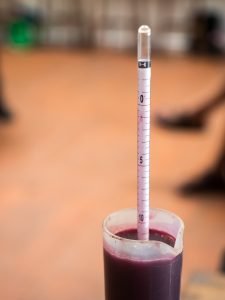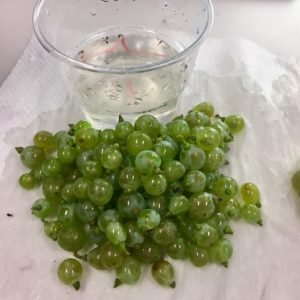I have learnt so much during week 2 of my Viticulture degree, both practical and theoretical. Finally my brain might be giving up all those ancient plot lines of Neighbours or the lyrics to every song I have ever heard. Instead, it is being stacked with facts, methods and delicious memories of flavours and textures.
Top three things I have learnt this week:
1. Crop rotation
Apart from cattle, wheat accounts for the second largest agricultural industry in Australia. Other cereals like barley and oats as well as oil seeds like canola and sunflower are amongst other popular crops grown here. All of these cereals and oil seeds can take their toll on soil nutrition if planted year after year.
Many precise soil measurements can be used to inform the farmer as to the suitability of the soil. When the nutrients in the soil are low, crops may suffer from root diseases and other pests may become a problem. The solution is to rotate your crop or plant a break crop every few years. Legumes (pulses) like peas and lentils are perfect break crops. They have a symbiotic relationship with bacteria that live in nodules on their roots. The bacteria fix nitrogen in the air to nitrogen compounds in the soil and thereby increase the soil nutrition.

Measuring the Baumé with a hydrometer
Why is this relevant to wine? Some vineyards have been producing grapes for 150+ years, however it is not possible to break the crop with legumes as vines are a little more permanent. Fertilisers are one answer, but more often vineyards are utilising natural fertilisers and biodynamic means to keep soils healthy. Allowing chickens to graze and scratch between the vines or growing snow peas up them (when not being harvested) have been suggestions I have heard this week.
2. Wine sugars
The main sugars in wine are glucose and fructose (though they may be involved in more complex combinations). Grape juice sugar concentration can be measured using a hydrometer and the Baumé scale. During fermentation the sugars are converted to alcohol by yeast and winemakers know that fermentation is over when the sugar concentration drops to 0 Baumé. Interestingly, the Baumé of the harvested grapes gives you a good indication of the alcohol level of your finished wine.
3. Berry Sensory Analysis

These grapes are around 12 Baumé
Without doubt, the best part of my uni week was winemaking on Friday. For the very first time I got to touch, squeeze, squish, juice and taste some 2017 vintage wine grapes. The season’s first Pinot Noir and Sauvignon Blanc in fact.
BSA is a method used by vineyards to assess the readiness of their grapes for picking. Surely they could just see or taste that? I thought that too, however it appears that it is a much more complicated process. You see, grapes on the inside or on a particular side less exposed to the elements may ripen more slowly. Indeed bunches on one side of a row or on a shadier side of a paddock may take longer too. Blocks are usually picked in one go, so it important to get the balance of ripeness correct.

BSA of Pinot Noir grapes
Furthermore, grapes are not necessarily picked at full ripeness. The varietal and style of wine to be made determines if they should be picked earlier – like for sparkling and crisp whites. Riper berries are more suitable to full bodied reds and over-ripe berries for fortified or dessert wines.
During the BSA a large random selection of grapes from all over the vineyard are carefully assessed. Every element is inspected, chewed and tasted to give a good idea of the overall ripeness of the crop, and the potential wines that may be produced that vintage. The chewy skins, sweet pulp and crunchy seeds all give clues. However, I learnt very quickly that unlike toasty ripe seeds, under-ripe seeds are so astringent that they can numb your whole mouth.
The rest…
This was really just the tip of the iceberg. We stomped our first batch of extra-curricular grapes too… but more details to come of that sticky experience. I also instigated the first post-uni Friday night drinks with my course mates. All I shall say on that subject is that it looks like we are going to have a lot of fun this year!
Next week I start my tractor driving course and have my first chemistry practical. The pressure is on, as I used to teach some of this stuff.
Until then… x

